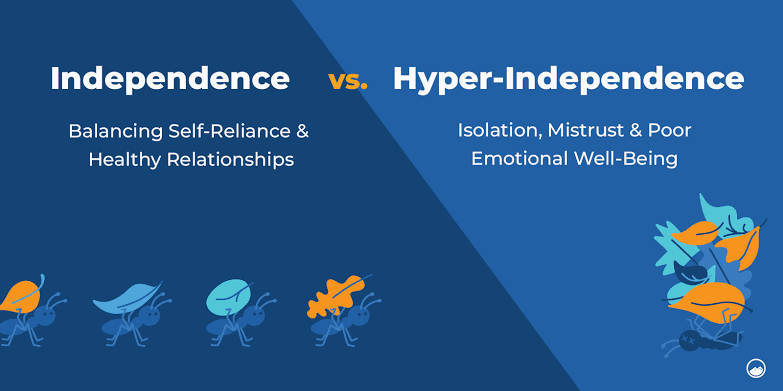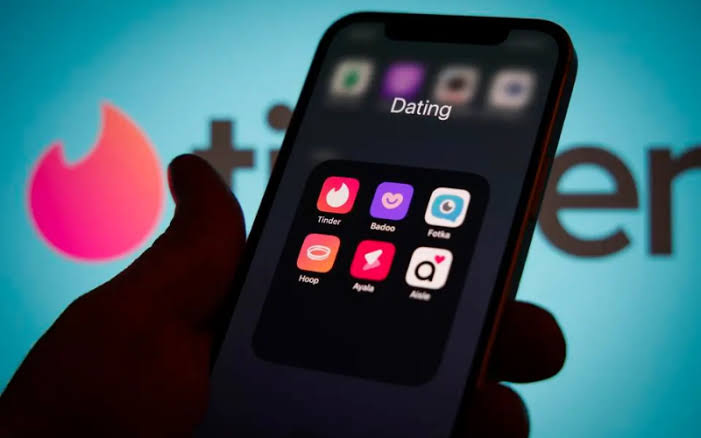
We live in a world that celebrates strength, self-reliance, and the hustle of doing things on your own. Independence is praised as a virtue—and rightly so. Being able to hold your own, emotionally and practically, is a powerful thing. But what happens when independence turns into hyper-independence? When “I’ve got this” becomes “I don’t need anyone—ever”?
And more importantly—what does that mean when you’re in a relationship?
If you’ve ever felt resistant to asking your partner for help, found yourself uncomfortable with emotional closeness, or preferred to deal with challenges solo even when someone is offering support, you might be experiencing hyper-independence.
But is it just your personality? Or is it a coping mechanism rooted in past trauma?
Let’s unpack it together.
What Is Hyper-Independence?
Hyper-independence is the extreme form of self-reliance. It goes beyond being capable and confident. It’s when you:
- Avoid depending on others for emotional or practical support.
- Struggle to ask for help, even when overwhelmed.
- Feel unsafe or uncomfortable being vulnerable.
- Dismiss closeness or emotional intimacy, even in committed relationships.
It’s not just about wanting “me time” or being self-sufficient—it’s the belief (conscious or unconscious) that relying on others is dangerous, weak, or pointless.
At its core, hyper-independence often says: “If I don’t do it myself, I’ll be disappointed—or hurt.”
Read Also: Planning a Relationship Check-In: When and How to Do It (Without Making It Weird)
Healthy Independence vs. Hyper-Independence
Let’s be clear: independence is not the problem. In fact, it’s essential for healthy relationships. Two whole people coming together by choice—not need—is the ideal.
But here’s where the line gets blurry:
| Healthy Independence | Hyper-Independence |
| “I can handle things, but I’ll ask for help when needed.” | “I must handle everything myself.” |
| Enjoys alone time, but values connection. | Keeps emotional distance, even in love. |
| Allows interdependence and trust. | Sees dependence as weakness. |
| Comfortable with vulnerability. | Avoids vulnerability at all costs. |
| Builds relationships on trust and teamwork. | Builds walls to protect oneself. |
Hyper-independence may look strong on the outside, but it often comes from a place of fear, not strength.
Where Does Hyper-Independence Come From?
Here’s where things get deeper. In many cases, hyper-independence isn’t just a personality trait—it’s a trauma response.
1. Childhood Emotional Neglect
If you grew up in a home where your emotions weren’t met with care—maybe they were dismissed, mocked, or ignored—you may have learned early on that it’s safer not to rely on anyone.
Children internalize this as: “If I show need, I’ll be let down. I’ll just do it myself.”
2. Abandonment or Betrayal
If you’ve been abandoned (emotionally or physically), betrayed by someone you trusted, or let down in critical moments, your brain adapts. It builds emotional armor.
This creates a survival strategy: Don’t let anyone in. Don’t need anyone. Then you can’t be hurt.
3. Over-Responsibility in Childhood
If you were “the responsible one” growing up—taking care of siblings, managing your own needs, or parenting your parents—you may associate dependence with chaos or instability.
You may have learned to equate control with safety. Relying on someone else? That feels risky.
4. Societal and Cultural Influences
In many cultures, particularly those emphasizing stoicism, strength, or individualism, needing others is painted as weakness.
This especially affects:
- Men, who are often taught not to cry, not to ask for help, not to “need” anyone.
- Black and brown communities, where generational trauma and systemic oppression have bred a culture of resilience and self-reliance.
- Women, who were raised to be everything for everyone—and may now associate asking for help with being a burden.
Trauma, culture, and personal experiences all blend together to create patterns of hyper-independence that can deeply affect how we relate to others.
How Hyper-Independence Shows Up in Relationships
In romantic relationships, hyper-independence can cause real friction—even when love is present. Here’s how it often plays out:
1. Emotional Walls
You keep your partner at a safe emotional distance. You may be affectionate and fun, but when it comes to deep emotions or vulnerability, you shut down.
Your partner might say, “I don’t really know you.” Or feel like they can’t reach the real you.
♀️ 2. Resistance to Help or Support
You’d rather suffer quietly than ask your partner for help—whether it’s financial, emotional, or logistical. You may even get irritated when they offer help.
Why? Because support can feel threatening—it reminds you of the vulnerability you’ve tried to avoid.
♂️ 3. Solo Decision-Making
You make big life decisions alone, even when in a partnership. Not because you’re disrespectful, but because you’re used to relying solely on yourself.
Your partner may feel excluded or unnecessary—even if you don’t mean to send that message.
4. Discomfort with Closeness
Too much intimacy—emotional or physical—feels overwhelming. You may pull away after sex, avoid long-term planning, or deflect when conversations get “too deep.”
Commitment can feel like a loss of control, rather than a safe partnership.
5. Sabotaging Healthy Love
When someone treats you well and shows up consistently, it can feel unfamiliar—too safe. You might start to nitpick, withdraw, or create drama to reestablish emotional distance.
Sound familiar?
Is It Trauma… or Just Who You Are?
This is an important question—and a tricky one. How do you know whether your hyper-independence is a trauma response or a genuine preference?
Ask Yourself:
- Do I feel safe asking for help?
- Do I trust others with my emotional world?
- Have I been deeply hurt by someone I relied on before?
- Does closeness feel threatening or suffocating?
- Do I feel shame or anxiety when I need something from others?
If your answers lean toward avoidance, fear, or control, you may be operating from a trauma response—not just personal preference.
But if you can confidently say:
- “I’m okay being vulnerable.”
- “I feel safe with others—I just enjoy doing things on my own.”
- “I can ask for help, I just prefer not to most of the time.”
Then your independence may indeed be your authentic preference—not a shield.
Healing Hyper-Independence in Relationships
The good news? You can heal. Hyper-independence doesn’t have to be a permanent barrier. Here’s how to start softening the armor—without losing your sense of self:
1. Acknowledge the Root
Awareness is the first step. Ask yourself:
- Where did I learn that I couldn’t depend on others?
- Who taught me that asking for help is weakness?
- What moments shaped my need to always be strong?
Recognizing the why behind your patterns creates space for compassion—not shame.
2. Communicate with Your Partner
Tell your partner what you’re working through. Let them know that if you resist help or emotional closeness, it’s not about them—it’s a reflex you’re unlearning.
A good partner won’t be offended. They’ll be honored to walk alongside you.
3. Start Small
You don’t have to bare your soul overnight. Start with little acts of openness:
- Accept help with a task.
- Share a vulnerable thought.
- Ask for comfort when you’re upset.
Each time you do, you teach your nervous system that it’s safe to lean in.
4. Challenge Your Inner Dialogue
That voice that says:
- “You’re a burden.”
- “They’ll leave if you get too close.”
- “You don’t need anyone.”
That’s not your truth—it’s your fear talking. Learn to challenge it with kindness and logic.
Try saying instead:
- “I can be strong and supported.”
- “Letting someone in doesn’t make me weak.”
- “It’s okay to need people sometimes.”
5. Therapy Helps
Working with a trauma-informed therapist can help you safely unpack the layers behind your hyper-independence. You don’t have to do it all alone (even if that feels weird to admit).
Therapy can also help you build new tools for vulnerability, communication, and trust.
The Beauty of Interdependence
You don’t have to choose between being strong and being connected.
Interdependence is the sweet spot. It means:
- You trust yourself.
- You also trust your partner.
- You maintain your individuality.
- You also let others show up for you.
It’s not dependence. It’s mutual support. A flow of giving and receiving, loving and being loved, showing up and being shown up for.
In interdependent relationships, asking for help doesn’t make you weak—it makes you wise.
Final Thoughts: You Don’t Have to Do It All Alone
Hyper-independence might have kept you safe once. Maybe it helped you survive. But now, in the context of love, it might be holding you back.
You don’t have to give up your autonomy to build a strong relationship. You can be you—whole, resilient, independent—and still allow space for tenderness, connection, and support.
Let your partner in. Let yourself be held. You’re not too much. You’re not weak. You’re just human.
And humans? We’re wired for connection.




